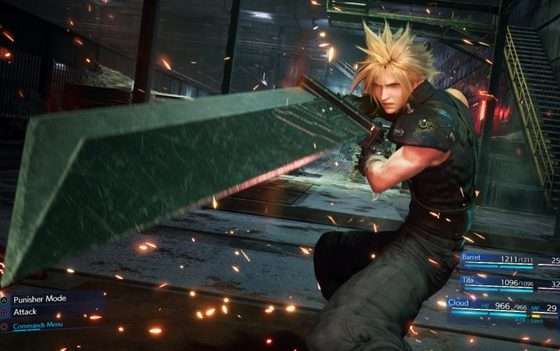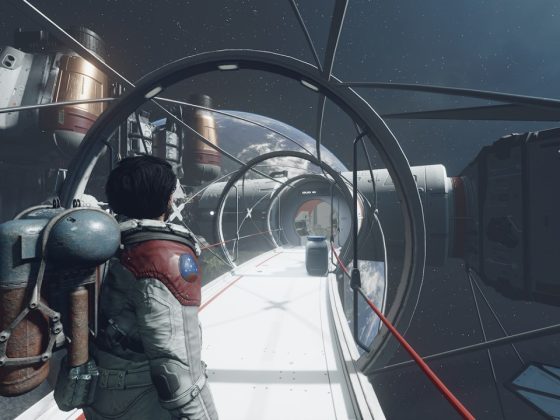The eagerly awaited installment of Assassin’s Creed was announced officially at E3 2017 just before Ubisoft’s press conference. There’s been much fan speculation regarding the latest edition to the much loved series after several leaked images seemed to indicate a new Assassin’s game set in Egypt. Fans were not disappointed with the announcement trailer revealing that the leaks were in fact early gameplay screenshots of Origins. While the announcement from the French developer stirred up quite the reaction from fans, not all of which was positive, many have been left speculating the future of the series and seriousness of the changes. The press conference revealed several startling changes in Assassin’s Creed: Origins, that has caused quite the controversy and doubt in long term fans of the series.

For the first time in an Assassin’s Creed game, weaponry is not only upgradable, but it also needs to be crafted or found within the world. This includes the iconic hidden blade, which needs to be found in the game and progressively updated. Gone are the days of instant kills without the work, as the developers of the game have confirmed that your assassin’s blade must be upgraded frequently if the player wishes to assassinate targets in one fatal blow. Although this might seem discouraging at first, the concept of upgradable weaponry can ultimately lead to a very satisfying player experience, as kills become a reward for hard work rather than a given. This also opens up the opportunity for a unique player experience, as the weapons you choose to use and upgrade can alter your game from someone else’s.
Another departure from the series is the player’s use of eagle vision. Although eagle vision has varied, often greatly, from game to game it has remained a consistent and familiar trope for the series. Assassin’s Creed: Origins offers the player a new and unique spin on eagle vision, and suggests the origins of the genetic ability. Players will need to utilise an eagle companion, Senu, if they wish to scout ahead and tag them so that they will be able to see them through walls as in previous games. Senu works very similarly to the owl in Far Cry: Primal, and so should feel familiar for Ubisoft fans. While this may be a change that will need some getting used to, it fits very well into the overarching theme of the game, which is the origins of the brotherhood, and so it does make sense to show the origins of the skill as well.

The UI has been completely redesigned for Origins, and appears to be more like an open world RPG rather than an assassin’s game. The mini map as well as many elements of the HUD have been removed, and instead replaced with a minimalist design used to focus the player’s attention on the beautiful environment for maximum immersion. Instead, a skyrim-esque quest marker spans the top of your screen to give the player some indication of where they need to go next, and in what direction they are heading. This is intended to help the player get lost in this massive world that is Ubisoft’s ancient Egypt, and it’s not difficult to see why this was the intention when looking at pre-alpha gameplay. The map is also much larger than previous installments in the series, and has been quoted to be over twice the size of Black Flag’s Havana.
In addition to the open world feel, the game also boasts more side quests than ever before. This was again intended to help create the world and cause the player to easily fall into a state of immersion when traversing the landscape, as the world is very much alive and brimming with things to do and influence. The gameplay footage from E3 this year demonstrated the living, breathing world that is Assassin’s Creed: Origins, showing off its vast and beautiful landscapes, busy and bustling cities, and its abundance of wildlife, some of which can even be tamed and ridden.
Another surprising development in gameplay from previous games in the series is the addition of a fully developed skill tree. This will be unlike the unlockable skills in Syndicate, as what skills you unlock in Origins can completely alter your gameplay. For example, there are three main branches you can develop in Origins, all of which encourage a separate style of play. These include the Hunter, the Warrior, and the Seer. To what extent this alters your gameplay is unknown, but the prospect of a unique player experience is a very exciting one indeed, especially in a world where the core gameplay is altered by the player’s choices. gameplay is so common. It also means that players will be able to customise their version of Bayek more than any previous assassin.
Despite claims from those who have been able to play the game at E3, Assassin’s Creed: Origins seems like a vast departure from the rest of the series, not only in gameplay, but also stylistically. The series has been criticised in recent years for not developing the overarching plot, and maintaining a predictable yet comfortable formula for a few years now. The sheer size of the world that will be available to players, as well as the level of customizable and unique gameplay promises to shake up and give the series a much needed change of scenery. Ancient Egypt has long been a requested setting for an Assassin’s Creed game, and based on screenshots and gameplay trailers, it seems to deliver graphically and fans will not be disappointed.

As a long term fan of the franchise, these new changes in Origins seem like a breath of fresh air that the series so desperately needs. Although I remain skeptical until I can get my hands on the game in October, I am very optimistic and can’t wait to visit one of my favourite periods of history in one of my favourite franchises. Although change in established franchises can be scary, Origins appears to have maintained the core values of an Assassin’s Creed game whilst also giving it a fresh coat of paint. While the game hasn’t been released yet, long term fans of the series should remain optimistic and hopeful that these new changes will reinvent the franchise, and I for one can’t wait to play it.







